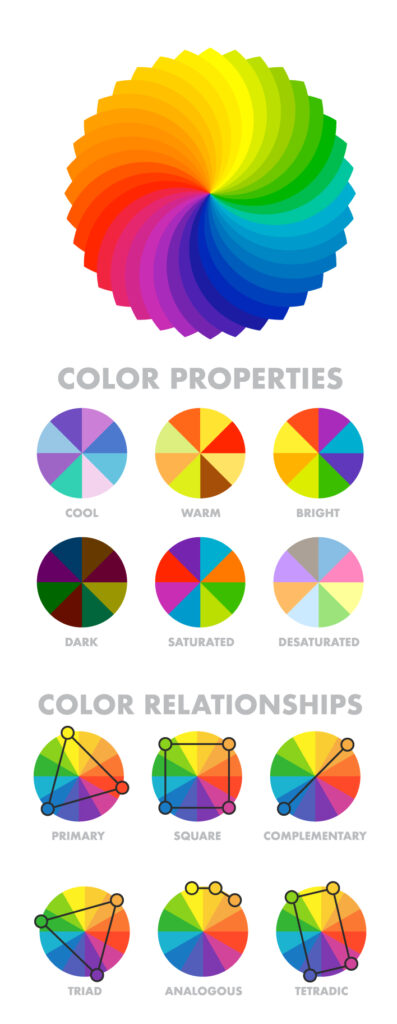Using colors helps enhance the design’s many folds. Thus selecting colors for your design is an important part of the brand-building process. All your communication needs to be informative, but before that, they need to be attractive enough to catch the eye of the customers.
Here we will explain you few tips and tricks to select and use the colors for your design in order to enhance the visual quality and make your advertisement/ social media post/ print collaterals etc attractive.
Find below the tips and tricks to create and use color palette:
1. Creating a color palette: Although, it is the most challenging part. But it will help you make things easier in the process of creating the design. In case you already have one (for the brand you are designing for), that would be an add-on advantage. The easiest way to make a color palette is to use color harmonies.
Find below a few of them for your reference:

2. Using the Color Palette: Once you are ready with the color palette, it is now time to apply your color palette to the design. Here are some rules to follow before engaging yourself in coloring.

3. Test your Design with the Color Palette: After creating the design with your color palette. Now you can test your design with a small group of people for their reviews or you can use A/B testing on meta etc.
Sometimes you get to love so much of the work you have put hard work into, that you forget a few minor yet important details. It is always advisable to use a design on a smaller group before using it for mass.
4. Conclusion: Making a color palette is not an easy task. It takes a lot of labor and skills for iteration and careful application to reap benefits from the designs.
The right color palette when selected can help you make designs appeal, create brand image, & brand perception, enhance brand value, impact the target customer, draws more customers and sales, and increase the level of interaction in this digitally disruptive world.

Few links to study more on this subjest:
https://www.interaction-design.org/literature/topics/color-theory
https://www.coursera.org/lecture/graphic-elements-design/understanding-color-theory-1SYDS
For any query or related work, you can contact us here








